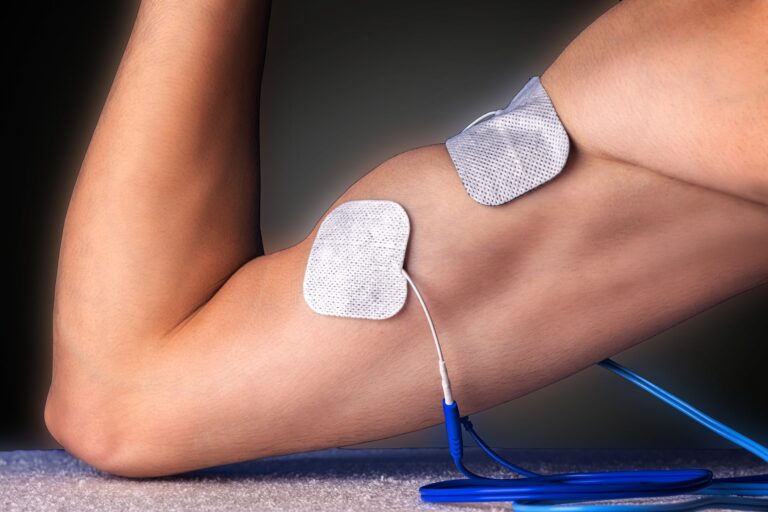EMS Training, short for Electrical Muscle Stimulation Training, has emerged as a groundbreaking approach to fitness, offering a blend of technology and exercise that promises efficient workouts in less time.
This method, which uses electrical impulses to stimulate muscle contraction, is touted for its ability to enhance strength, improve muscle tone, and aid in faster recovery. Check out this website for more tips and tricks for EMS training.
But how long does EMS training last, and what guidelines and tips can make these workouts more effective? Let’s dive into the nuances of EMS training, exploring its duration, benefits, and strategies for maximizing results.
EMS Training

At its core, EMS training involves wearing a suit that delivers electrical impulses to different muscle groups, mimicking the action potential that comes from the central nervous system.
This technology essentially tricks the body into believing it’s working out, engaging more muscle fibers than conventional training methods.
The appeal of EMS lies in its promise of achieving significant fitness gains with sessions as short as 20 minutes, making it an attractive option for those with busy schedules.
Duration of EMS Training Sessions
The typical duration of an EMS workout session is between 20 to 30 minutes. This timeframe is considered optimal for stimulating muscles effectively without overexertion, which could lead to muscle fatigue or injury.
The efficiency of these sessions is attributed to the simultaneous activation of multiple muscle groups, a feat hard to achieve through traditional workouts.
Frequency of EMS Workouts
When it comes to how often you should engage in EMS training, most experts recommend a frequency of once or twice a week. This recommendation is based on the need for adequate recovery time between sessions.
EMS workouts are intense, and the muscles require time to repair and strengthen. Overdoing it could lead to the opposite of the desired outcomes, increasing the risk of injury and muscle wear and tear.
Initial Phase of EMS Training
For newcomers to EMS training, the initial phase is crucial for adapting to the sensation and intensity of electrical stimulation.
The first few sessions should focus on getting comfortable with the equipment and the experience, with incremental increases in intensity. This period is also vital for the trainer to assess the individual’s response to EMS and adjust the program accordingly.
Progress and Adaptation

As with any workout regimen, progression is key to avoiding plateaus and continuing to see improvements.
In EMS training, progression can be achieved by increasing the intensity of the electrical impulses, extending the duration of the sessions slightly, or incorporating more dynamic and challenging movements into the workouts.
The adaptability of EMS allows for tailored adjustments to meet individual fitness levels and goals.
Safety and Contraindications
While EMS training is generally safe for most people, there are certain contraindications to be aware of. Individuals with pacemakers, pregnant women, and those with certain medical conditions should avoid EMS.
Additionally, ensuring the use of EMS equipment under the guidance of a certified trainer is paramount to prevent injury and ensure the effectiveness of the workout.
Tips for Effective EMS Workouts
To maximize the benefits of EMS training, there are several strategies one can employ. First, hydration is key before and after sessions to help muscles recover and reduce soreness.
Second, focusing on form and technique during exercises enhances the effectiveness of the muscle stimulation and prevents injury. Lastly, integrating EMS training into a broader fitness and wellness routine, including cardiovascular activities, strength training, and proper nutrition, can amplify results.
The Future of EMS Training
As technology advances, so too does the potential for EMS training. Current trends suggest a growing interest in at-home EMS devices, offering the convenience of workouts without the need to visit a gym or studio.
The importance of professional guidance cannot be overstated, especially for beginners or those with specific health considerations.
FAQs

What attire is recommended for participating in electrical muscle stimulation sessions?
Special conductive garments provided by the training facility are advised for use during sessions. These garments ensure effective transmission of electrical impulses to the muscles when used with the stimulation suit.
Can participating in electrical muscle stimulation sessions aid in weight reduction?
Yes, as part of a holistic fitness and nutrition strategy, this form of training can contribute to weight reduction. By boosting muscle strength and tone, it can elevate your metabolic rate, leading to an increased calorie burn even during rest.
Nonetheless, to see significant weight reduction, it should be paired with cardiovascular activities and a balanced diet.
Who should avoid electrical muscle stimulation training?
Besides the groups already mentioned (those with pacemakers, pregnant individuals, and people with specific medical conditions), individuals suffering from severe neurological disorders, epilepsy, or acute illnesses should refrain from this type of training.
Consulting with a healthcare professional before commencing any new exercise routine is advisable, especially for those with existing health issues.
What is the expected timeline to observe results from this type of training?
The visibility of results varies per individual, depending on factors like initial fitness level, session frequency, and overall lifestyle.
Some may notice improvements in muscle tone and strength within a few weeks, whereas more substantial body composition changes may take longer. Consistent participation and incorporating other healthy practices are crucial for achieving and maintaining results.
Is it possible to conduct electrical muscle stimulation training at home?
Advances in technology have introduced home-based training options. However, for safety and efficacy, using these devices under the supervision of a certified expert is essential, particularly for novices.
Proper instruction on device usage is crucial to prevent injuries.
How does electrical muscle stimulation training differ from conventional weight training?
This training method is noted for its efficiency, enabling simultaneous activation of multiple muscle groups, which might not be achievable in conventional sessions.
While traditional methods are indispensable for augmenting muscle mass and strength through extensive motion ranges, electrical muscle stimulation can increase muscle activation and strength without heavy weights.
Both practices offer distinct advantages and can complement each other when included in a fitness regimen.
Final Words

EMS training represents a fascinating fusion of technology and physical fitness, offering a time-efficient and effective option for improving muscle strength, tone, and overall health.
The key to success with EMS lies in understanding its principles, respecting the body’s limits, and adhering to recommended guidelines for duration and frequency.
With the right approach, EMS training can be a valuable addition to one’s fitness journey, providing benefits that extend beyond the short duration of its workouts.
Whether you’re a seasoned athlete looking to enhance your training or someone seeking an efficient way to get fit, EMS training offers a promising avenue worth exploring.







